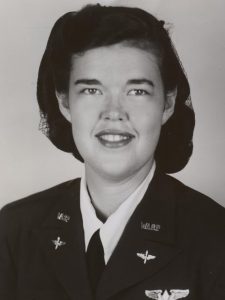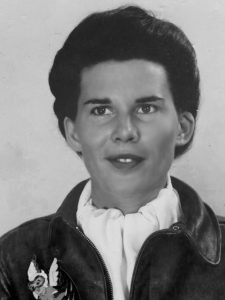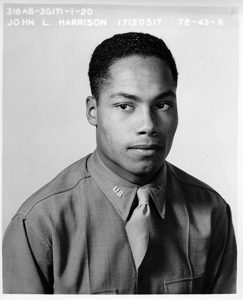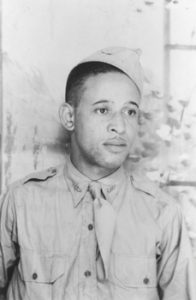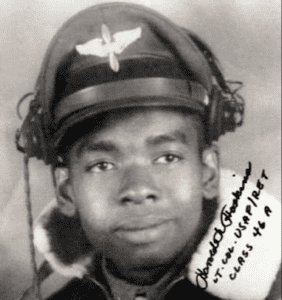 LTC Harold Kelly Hoskins
LTC Harold Kelly Hoskins
February 15,1927-May 1, 2012
Graduation Date: 10/12/48
Unit: 332nd Fighter Group, 301st Fighter Squadron
While he did not serve overseas during WWII, he and eleven other African American pilots, who completed their advanced pilot training beyond Tuskegee, would be considered Tuskegee Airmen because they were assigned to Tuskegee Airmen organizations before those units were inactivated in 1949. In fact, between the middle of 1946 and the middle of 1949, all new African American military pilots received their flight training at bases beyond Tuskegee, because Tuskegee Army Air Field ceased pilot training by the end of June 1946, even though they were assigned eventually to the all-black flying units. Among those other flying training bases were Stewart Field, New York; Enid Army Air Base, Oklahoma; and Williams Air Force Base, Arizona. If one considers all eleven of these pilots as Tuskegee Airmen, there were more than 1000 Tuskegee Airmen who were pilots, 992 of whom completed their pilot training at Tuskegee
The Program at Tuskegee
“Hands down, Tuskegee was much harder,” Harold Hoskins, shared during an interview with Melissa T. Miller of Military.com
As a former student both at Tuskegee and later at an integrated pilot school at Texas’ Randolph Air Force Base, and having served under Colonel Benjamin Davis and logged 9500 flight hours in the Air Force, Hoskins is in a unique position to compare both experiences. Since retiring from the Air Force, he has become Assistant V.P. of Student Affairs at California State University in Hayward.
“The Tuskegee program was so rigorous, you didn’t have time to think,” says Hoskins. “A history master’s student, who happened to be Jewish, was interviewing me for her thesis, asked me if I knew anything about the Holocaust. Honestly, all that was on my mind was ‘Can I get through this program?’ I didn’t have the faintest idea about the Holocaust, nor about anything else that was happening in American society either, for that matter.”
An initial part of the Tuskegee experience was getting hazed by upper classmen, a tradition brought over from the military academies and four national Black fraternities where many cadets had gone to school before enlisting in the Army Air Corps. Cadets were forced to “eat a square meal”: they were only allowed to sit on one corner of their dining room chair, made to sit perfectly straight, and bring their forks from their plates to their mouths at a perfect right angle, without moving their heads. If food was dribbled, the cadet had to stand up and scream the humiliating phrase, “I am a sloppy dummy.”
Pre-flight cadets were also awoken in the middle of the night, ordered to put on their rubberized ponchos and gas masks, and made to do various physical drills all night — while still being expected to do their full physical training regimen in the morning, which began at 6 a.m., as well as class all afternoon.
“I guess it was supposed to make you tougher,” explains Hoskins. “But when I got to Texas, I found out those white boys had no idea what hazing and fazing was all about. I didn’t let on, but Texas was a piece of cake.
“Just to give you an example, we had to hem our own pants and sew on our own buttons on our shirts at Tuskegee. At Texas, we had tailors!” he laughs. “At Texas, they even customized our shirts so they fit just right and we looked sharp. At Tuskegee, we had to make sharp folds in our shirts, wrapping them sometimes all the way to our backside, to make them fit properly.”
It is important to note that at the time African-American pilots trained at Tuskegee, the military was still completely segregated, which means the pilots’ planes serviced by African-American mechanics and other specialists. Armament specialists trained at Lowry Field in Colorado, radio specialists at Scott Field, Illinois, and mechanics at Chanute Army Air Field in Illinois.
After he retired from the service Harold continued his work in public service, earning a Masters of Public Administration from Cal State University. Harold was the Assistant Director of Student Services for the University and was a pioneer in the development, and management of student housing.
Culminating his lifetime of public service, Harold was awarded a replica of the Congressional Gold Medal from President George W. Bush on March 29th, 2007, at the Library of Congress in Washington, D.C. He was also an active member of the Diablo Black Men’s Group, and assisted in raising thousands of dollars for college scholarships for underprivileged youth.
Lieutenant Colonel Harold Hoskins passed away peacefully on Tuesday, May 1, 2012, leaving behind a long legacy of service to his country, commitment to education, and an eternal dedication to the community and to his loving family. We are honored to celebrate a life well lived.
Sources:
A SHORT HISTORY OF THE TUSKEGEE AIRMEN by DANIEL L. HAULMAN
Findagrave.com
Legacy.com
Military.com


